I found when looking for ways to get faster on the bike, is that there is so much information, from different coaches and experts, that it can be confusing and overwhelming. Personally, I enjoy having so much information as it allows me to try different methodologies to find what works for me, and for my client athletes. Here are a few ways to increase your speed on the bike, that in my experience has worked quite well.
Increase Your Pedaling Efficiency to Get Faster
How does a bike move? The circular motion of the pedals, right? How do you create that motion? You push down on the pedals which moves the crank in a circle. That is one way. The question would be, is that the most efficient and does it propel the bike with the full potential of the rider? Not necessarily.
Most novice bikers tend to only push down on the pedals as I mentioned prior. That is only half of it. One of the reasons most cyclists and triathletes use bike shoes and clip-less pedals is not only to keep feet firmly in place, but the fact that it allows for two points of power; Pushing down on the pedals using the quadriceps, and pulling up using the hamstrings. An effective analogy that helps to turn the grinder (push only) cyclist into a more efficient one, is imagining the full rotation of the crank as a clock.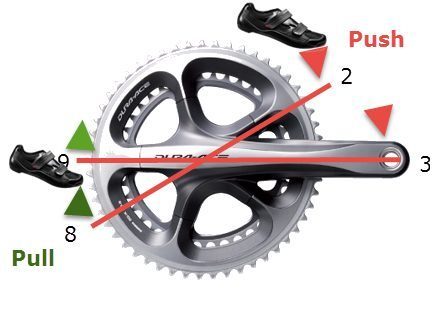
The penultimate, or switch, from push to pull of a single leg, might take place at the 9-3 or 2-8 positions. Be that as it may, every rider is different, so the penultimate may be different. In other words, as your foot rounds the 9 position, switch from pushing down to pulling up one foot while doing the opposite on the other. If you try this on your next ride, it most likely feels foreign. The best way to overcome that is to incorporate single leg drills into your warm up.
How to integrate better-pedaling efficiency
I prescribe my clients 100 single leg rotations on each leg with 1 minute of an easy spin in between as a warm up to every ride. This allows the initial leg to keep moving while receiving power from the opposite leg, and allow you to feel tension around a full rotation.
At first, you may feel a chunking in your stroke. That is just the crank telling you it does not have full tension all the way around the “clock”. Find a gear where you know longer feel or hear it and then continue with the exercise. Soon it will not matter what gear you are in. Finding that smooth, full pedal stroke will be an epiphany that will allow you to gain even more speed.
 Ride Hilly Courses to Get Faster
Ride Hilly Courses to Get Faster
Even if your event is flat, you will find an advantage to pedaling up hills. Steep hills will challenge your cardiovascular system while long hills will increase your strength.
A good amount of triathletes tend to fade away from doing hilly races because hills are a challenge. If only they would remember Isaac Newton and the law of gravity. What comes up must come down. While it might be a challenge going up, there is recovery on the way down.
How to integrate riding hilly courses
Start with a flat course that includes a couple of short hills and ride it a few times repeating the hills. Then find an area that includes a loop or out and back courses that is mostly hills or a good combination, and add loops for a few workouts.
I do not suggest finding a group that does hills on a regular basis and jumping in without conditioning yourself to take on different lengths and grades of hills.
Complete Best Effort Interval Workouts and Get Faster
When I first started, I never thought to use the knowledge I gained completing track workouts would transfer it to the bike. I 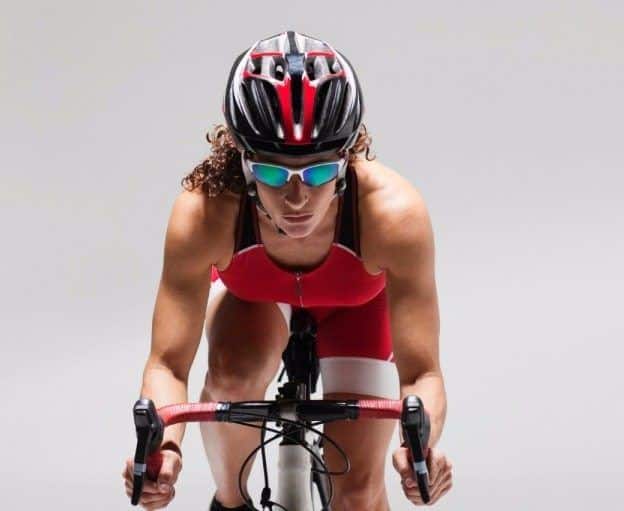 found that, for me, interval training, like on the track, it is one of the fastest ways to progress on the bike. If there is only one tip you take away from this article, take this one.
found that, for me, interval training, like on the track, it is one of the fastest ways to progress on the bike. If there is only one tip you take away from this article, take this one.
Intervals are designed to adapt other muscle fibers for use along with the main set of fibers. Endurance athletes engage slow-twitch, Type I muscle most of the time. By completing short bursts of high-intensity effort, the fast-twitch, type IIa, and IIb muscle fibers are integrated allowing us to gain their power for higher speeds.
Type IIa muscles can be utilized at the maximum for 2-3 minutes and type IIb only for about 30 seconds. How does this help? When these fast-twitch muscle fibers are used they increase the strength of the type I muscle fibers because they are not doing all the work for that time. The endurance muscle fibers are given some recovery allowing them to be used at a higher intensity later.
In-between the high-intensity intervals are high gear spins or low tempo efforts. The fast-twitch fibers can then recover as well. Fast-twitch muscle fibers can recover almost as fast as they are depleted.
Example of Best Effort Interval Workouts
Quick Note:
My clients usually have been riding and completing at least six months of medium intensity workouts before they are prescribed Best Effort workouts. I suggest having a very good fitness base before attempting a workout like the one below.
Here is one workout I assign my clients:
- Warm-up: 10 Minute Easy Spin
- Main Set: 30 Seconds Best Effort, 1-minute Easy Spin x 5
- 1 minute Best Effort, 3 minutes Easy Spin x 5
- 3 miles Race Pace, 1-mile Easy Spin X 5
- 30 seconds Best Effort x 1-minute Easy Spin x5
- Cool Down: 10 minutes 95+ RPM Spin
Best Effort is just what it says. The fastest you can go for that amount of time without regards to the rest of the workout. You will find that each of the intervals will be slower than the interval prior. If it isn’t, then you did not truly go all out or in other words, give your best effort.
Train with Power to Get Faster
I started training with power two years ago, and it has helped me get faster on the bike not only efficiently but with a lot less difficulty. A power meter provides you with the amount of torque, in watts, you are creating while pedaling at any given time.
The advantage here is that by calculating your Functional Threshold Power, you can train in and outside of your limitations to create strength and power which will result in more speed. Prior to training with power, I was constantly looking at three things. Speed, Cadence, and Heart Rate(HRT). I would also have to take into consideration the conditions and terrain I was training on. If it was hilly, my HRT would scream as I was riding the incline and my speed would reduce, and then the opposite on the decline. When the weather was windy, my HRT would elevate if I tried to keep my speed at my goal, so I would have to reduce it, in order to keep from bonking.
With a power meter, I only have to look at one number. By completing a test and calculating my personal Functional Threshold Power, I now only need to look at one number. FTP is the total number of watts I can average over an hour. Total watts is in my definition from ‘Fresh’ to ‘Dead’. Totally recovered to totally spent.
Obviously, there are certain races you do not want to race at your FTP or over. For example, a 70.3 triathlon; which includes a 56 miles bike after a 1.2-mile swim and before a 13.1 mile run following. If you ride at your FTP, you won’t have enough energy for the rest of the bike, let alone the run.
Goal Race Power
Through training, the object is to find the what your Goal Race Power will be. Usually, we think about it as a percentage of 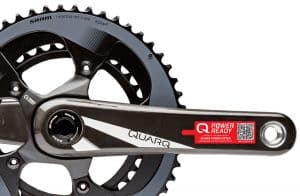 your FTP. Most triathletes can ride 90-95% of their FTP for a Sprint, 85-90% for an Olympic, 80-85% for a 70.3, and 70-75% for 140.6 triathlon events.
your FTP. Most triathletes can ride 90-95% of their FTP for a Sprint, 85-90% for an Olympic, 80-85% for a 70.3, and 70-75% for 140.6 triathlon events.
For example, if my FTP is calculated at 300 watts, then my goal race power for a 70.3 triathlon would be 184-195. That is the only number I have to look at. Instead of thinking about my speed, what my heart rate is, and then what adjustments to make for conditions, I only have to look at the one number.
If I have to climb a hill on the course, I increase the gear to a point that I stay in my power range. The same holds true for wind. My FTP takes in to account everything my body can handle. Sure, on a hill or in the wind my speed might be reduced, but my power will remain the same.
I no longer chase a certain speed on the bike. If I have to put out more watts than my goal race power in order to maintain that speed, then I will end up expending energy I need for the run. Unfortunately, power meters are not cheap. I can write several articles on types, brands, and accuracy of different power meters, so I will not go into that here.
How to integrate Training with Power
The first thing to do is calculate your FTP. It does not have to be done on an hour bike ride where you go all out for that hour. It can be calculated with one 20 minute ride.
After a solid warm-up, speed to what you believe is your tempo pace. Throughout the 20 minutes, build to a point where you are the absolute maximum effort for the last 5 minutes. You should be pretty spent at that point. Take the average power for that 20 minutes and multiply it by 0.92 and that will give you a good FTP to work with.
If you read any other more complicated articles on power, you will find that there are more specific ways of calculating your FTP that can help to make that number more accurate, but this is the most simplistic.
Now your workouts can consist of working percentages of that FTP for different objectives of your workouts. Speed work may include riding short intervals of 110-125% of your FTP, while for strength, you might ride longer intervals of 90-95%. To understand goal pace FTP, you might work long rides with long stints in variable percentages ranging from 75-90% FTP.
Strength Train to Get Faster
This tip can be looked at as either typical or far-fetched. The popular muscles for biking are mostly the quads and hamstrings, so why not do some squats, some leg curls, and the leg press and be done with it?
The question would be; what are your limitations on the bike? Do you even know if you have limitations? That would bring up the most important question, are you as good on the bike as you want to be? If your answer is “no”, then you have limitations.
The gym is the place to address those limitations and/or weaknesses and then turn them into strengths.
 How to integrate Strength Training
How to integrate Strength Training
Diagnose your limiters by testing your hamstring flexibility, your adductors and abductors, your core strength and leg strength. Then design a program to address those.
I suggest a strength session 2-3 times a week; one session for power, one session for endurance and agility, and a final session for movement and flexibility.
There are plenty of resources online to find the right movements to do for each session. Pay very close attention to the form of the exercise in order to reduce the chance for injury.
Summary
Everyone wants to get faster on the bike, but it only comes with work and working smart. Most posts keep re-iterating the same things. Good bike fit, ride more, faster-biking partners etc. I am hoping the points I have shared, are new to you or maybe just a little more specific.
Increasing your pedaling potential, riding hilly courses, completing best effort interval workouts, training with power and strength training are ways I found to get faster on the bike. They are current methods I prescribe to my own clients with great success. I hope they work for you too.
What are your plans to get faster on the bike? Do you know of any other methods?
Please comment below with your answers or any feedback you may have.
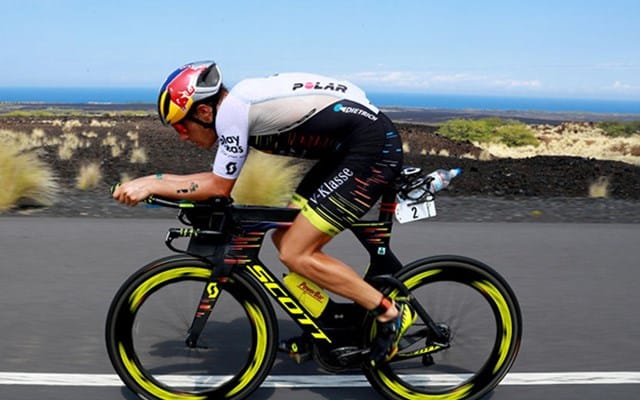


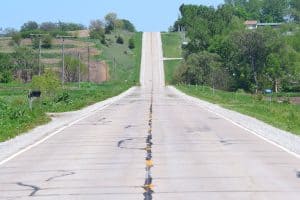 Ride Hilly Courses to Get Faster
Ride Hilly Courses to Get Faster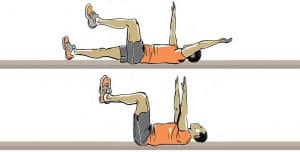 How to integrate Strength Training
How to integrate Strength Training
These are awesome tips! I’d love to be a faster biker!